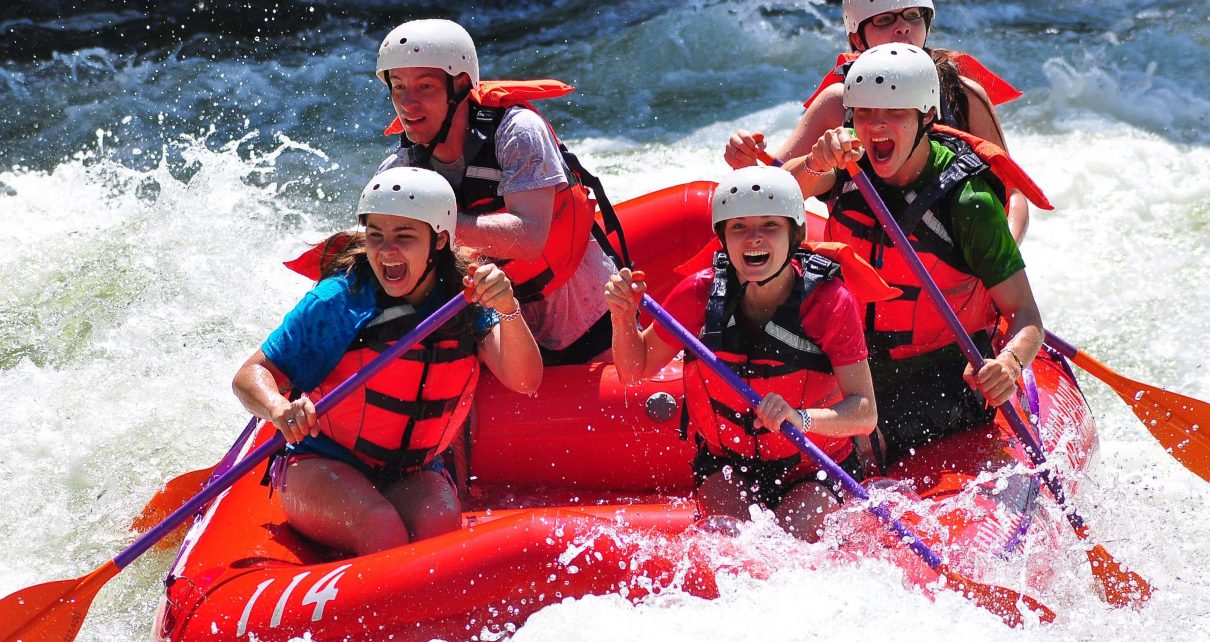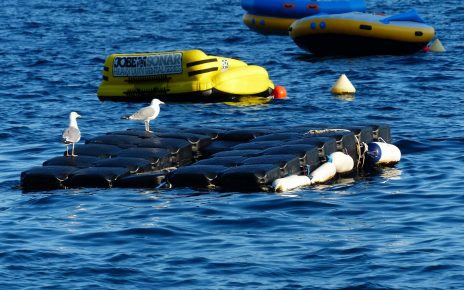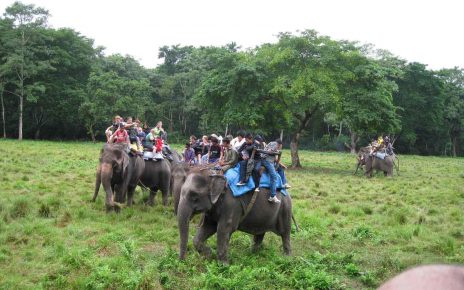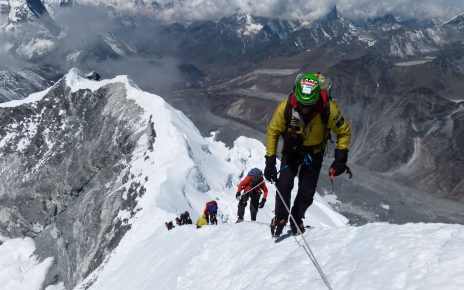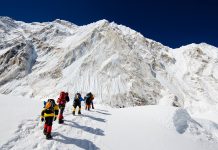Humans have been exploring rivers, lakes and oceans since the Stone Age, and the crafts that our ancestors developed to navigate waterways reflect the specific needs of their local environments. The modern day canoe most likely originated about 8,000 years ago while the rubber river raft is believed to have been invented in the early 1840s when US Army lieutenant, John Fremont, along with Horace H. Day, developed the rubber raft to survey the Rocky Mountains and the Great Plains of the US.
In 1886, John MacGregor published the book A Thousand Miles in The Roy Rob Canoe, which proved to be a major success in Europe, and happened to coincide with the Industrial Revolution. With more leisure time in the middle of the 19th century, Europeans started to enjoy floating down rivers in all kinds of contraptions taking in the natural world; an activity that was previously only available to a selected few. It was not until the turn of the twentieth century that the first commercial whitewater trip was undertaken. At first, surplus military rafts were used as boats and it was only much later that inflatable rafts were used.
Over the years, private rafting companies have played a major role in expanding the rafting business worldwide. In 1956, one of the members of the most affluent business families of America, John D. Rockefeller, built a resort that introduced one of the first floating trips in the country. However, it only evoked a lukewarm response. Later, in the 1960s and 1970s, exclusive whitewater rafting companies formed and laid the groundwork for the modern rafting industry.
Rafting was first included in the Munich Olympic Games in 1972. Subsequently, it was included in the 1992 Barcelona Games and the 1996 Atlanta Games. In 1996, the Ocoee River in Tennessee Valley played host to the whitewater events of the Summer Olympic Games.
Rafting 101
At its most basic, river rafting involves the paddling of boats or rafts (that are inflatable) and steering them down a river in the midst of swirling waters. Usually, the rapids are classified based on the conditions of the water, ranging from one to six. These grades indicate an increase in the intensity and difficulty as the numbers go up. Rapids categorised as ‘1’ are mainly recommended for children and beginners and those above ‘5’ are dangerous and are not meant for leisure rafting.
As rafting has gained popularity as a recreational activity over the last 60 years there have been many improvements in equipment and safety standards. Today raft designs take many forms and in some places they need not be necessarily paddled or rowed as motorised rafts are available. Another popular variety of raft is the hybrid raft, which has oars as well as the paddles. This enables passengers to distribute the tasks of paddling and oaring among themselves.
Rafting is generally supervised by a qualified professional guide, and their instructions must always be strictly adhered to by passengers. To prevent any risks on the river, it is required in Australia that all passengers wear a personal flotation device (PFD), a helmet, and closed toe shoes, at a minimum. Protective clothing (including wetsuits, booties, and cags) can also be worn depending upon prevailing weather conditions. Rafting is an exciting outdoor sport and there is no reason that beginners cannot enjoy the thrills of river rafting.
Within Australia, there are many wild and scenic rivers to discover. The Tully River in Queensland and the Franklin River in Tasmania are considered two of the world’s top rafting destinations. Sydney is home to the Penrith Whitewater Stadium, used during the Sydney Olympic games, while Western Australia, Victoria, and the Northern Territory all have rivers of exceptional beauty steeped in colourful local and natural history.
The peak season for most Australian rivers is from early spring through to summer. While a majority of rafting trips only last a day, multi-day trips are the preferred way to experience a river. Each rafting operator has its own pricing policy and duration for a trip, so interested teachers should research the organisation’s website for specific details. Also, most places offer discounts when reservations are made for large groups.
Why Rafting?
Rafting is an activity that will effortlessly get kids off the couch and away from all things technology. Rafting will get them up and active, out into nature, breathing fresh air, connecting with each other while appreciating the natural beauty of their surroundings and having the time of their lives. River environs hold within them a certain indefinable mystery for students and adults alike.
As an outdoor education activity, there are a number of extra benefits to be gained from rafting:
Team building and leadership skills: Take six students, put them in a boat and ask them to paddle together with the common goal of getting safely and skilfully down a river. Rafting requires teamwork, forges bonds and engenders strong group feelings; all in a completely natural and organic way so that the students do not even notice because they are having so much fun and are so exhilarated by the adventure. Moreover, leadership skills tend to naturally emerge in the face of whitewater rafting challenges.
Connection with nature and the environment: By experiencing firsthand the beauty of a river, students who would otherwise be indifferent to environmental issues may gain a strong desire to protect and preserve that area because of their positive outdoor experience. Upon completing a wilderness journey and rafting down a beautiful river, students take environment issues much more personally and seriously. They see the impact and the danger of pollution, development and other issues. Also water issues like dams and flood control become much more personal. The greatest benefit of whitewater rafting is the opportunity to get outside into the natural environment.
Physical challenge: While students can take an easy Grade 1 rafting trip down a gentle river, a Grade 3 or 4 experience is a real physical challenge. Rafters need to work together to muscle the boat around. They also have to keep their balance and stay inside the boat. It is a whole body experience and when they have run a difficult section of river or rapids, the whole body feels it afterward.
Bonding experience: The shared experience is one of the most enjoyable benefits of whitewater rafting. Whether you are having a fun afternoon with the class or undertaking a hardcore week-long journey, it is always a fun experience. Rafting also requires teamwork, as students are more than travelling together, they are working together to move that boat where they want it to go.
Mental challenge: Aside from the physical challenges of whitewater rafting, a serious expedition provides a mental challenge as well. Students may look at maps in advance of trips and think there is no way that they could accomplish that. Alternatively, they may study a rapid and think that there is no way to make it through. Then, with a bit of hard work and determination, they conquer that obstacle, and gain a great feeling of accomplishment and confidence. That feeling can pervade normal life for some and give them the confidence to tackle life’s complexities.
The psychosocial benefits associated with wilderness river rafting trips have been documented in research. Students, regardless of circumstances, have a unique opportunity to transform their perceptions of self and their surroundings through a river experience. Ideally, with strong teacher and raft guide leadership, a river trip can take the form of an interpretive journey exposing youth to the histories and mysteries of their inner and outer worlds.
Darren Collins is a highly qualified whitewater rafting, kayaking, rock climbing, abseiling and caving guide who has been in the adventure and tourism industry for almost 10 years. Darren is involved with a number of businesses, running tours himself and also working with some of the best tour operators around Australia.

